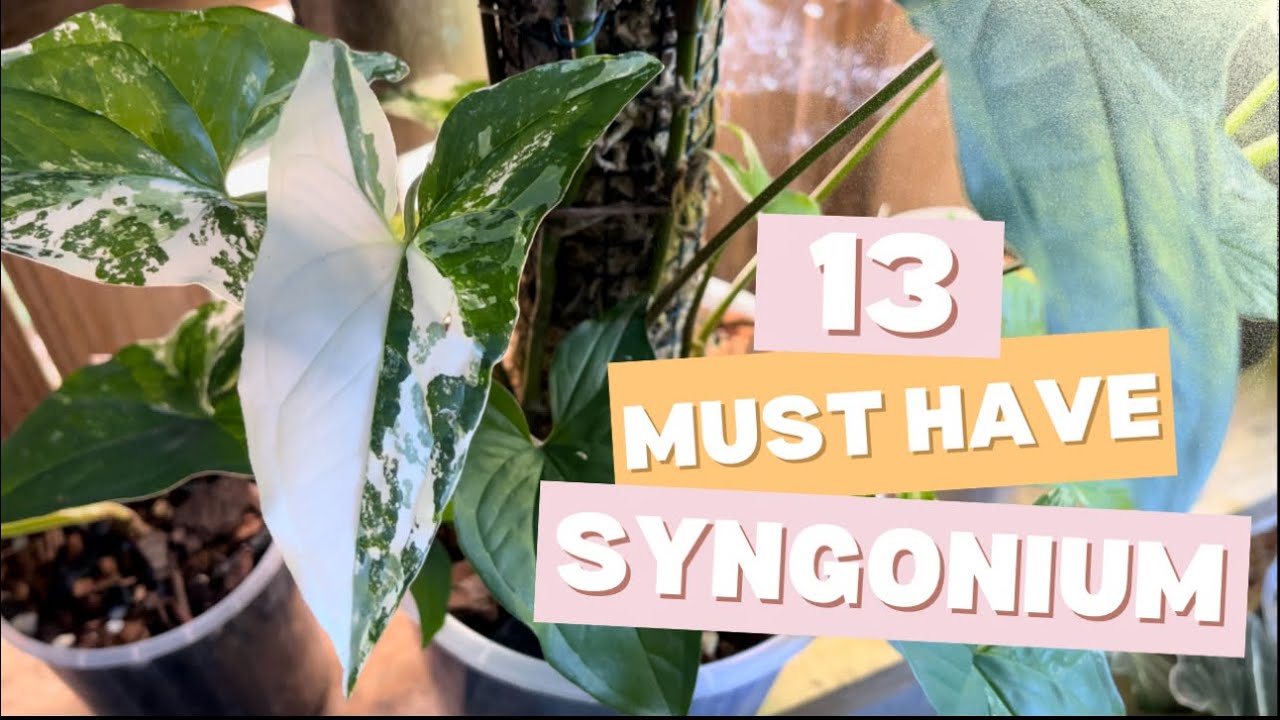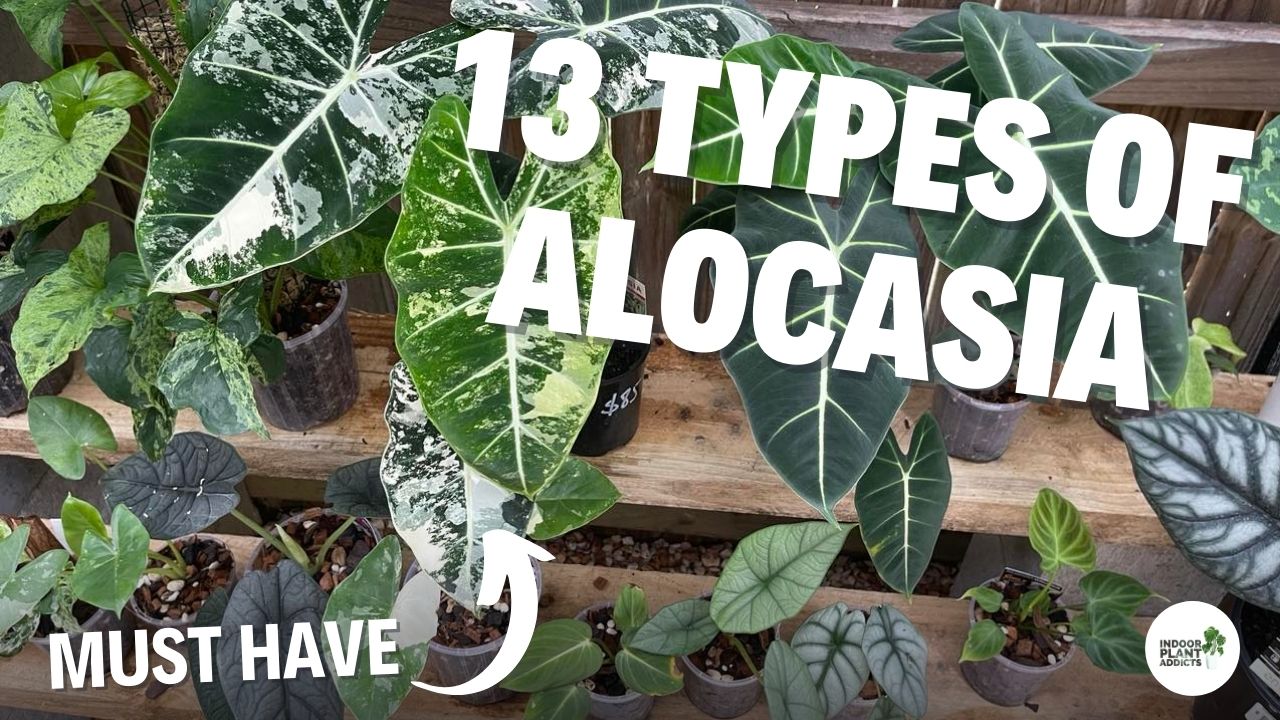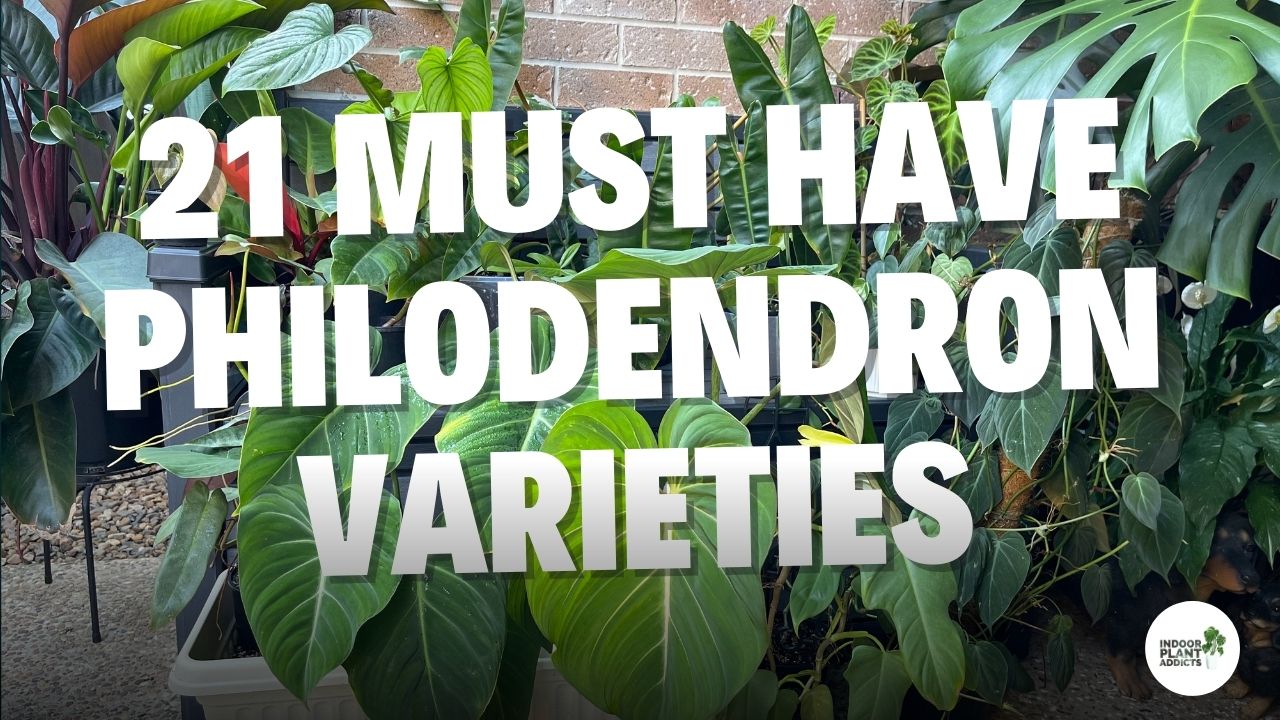Philodendron ‘White Knight’ are part of the Araceae family and originate from South America. This plant has lush green foliage with hints of white variegation flecked and marbled throughout.
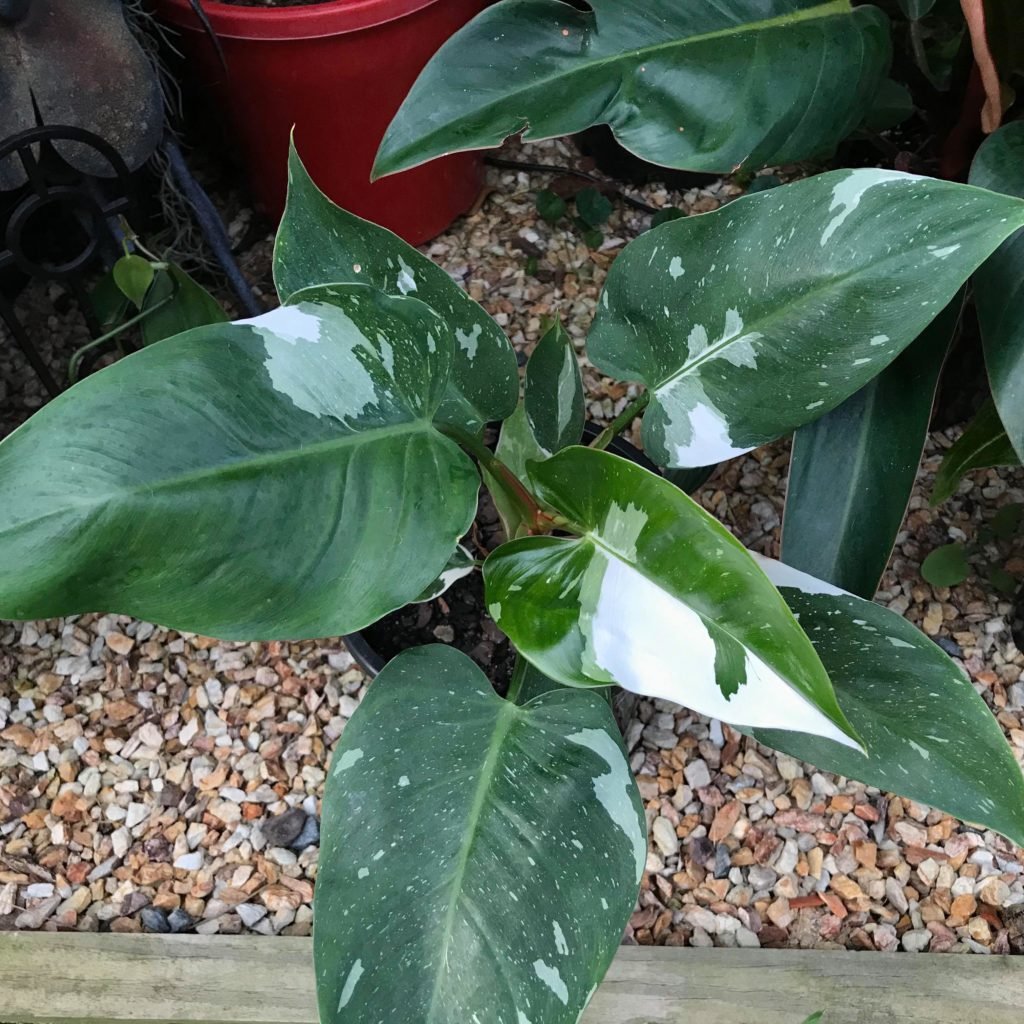
Philodendron White Knight are definitely one of our favourite houseplants and a great contrasting plant to the similarly related Pink Princess Philodendron. They will thrive when positioned in bright indirect light with a moderate humidity. Be sure to avoid direct harsh sunlight as this will burn the leaves.
In the sections below we will go through the basic care requirements of your Philodendron White Knight to make sure you have the best chance at keeping them happy and healthy.
Philodendron White Knight Quick Overview
| Full Size | 8-10 feet |
| Light | Bright indirect |
| Temperature | 55-80˚F (12-26˚C) |
| Humidity | Moderate to high (50% – 70%) |
| Cost | $$ |
| Care Level | Easy |
| Toxicity | Toxic |
Size
The mature size of a White Knight Philodendron can be upwards of 3 metres high. A mature leaf can reach up to 1.5 feet in length.
It can take a while to reach this size as the variegated leaves tend to grow slower than other philodendron varieties like “Rojo Congo.” Adding a pole for it to climb will help the plant to grow faster and encourage those larger leaves.
Philodendron White Knight Light Requirements
Philodendron White Knight will grow best when in bright indirect lighting. This plant will enjoy some filtered sunlight however, you should avoid the direct sunlight as this will burn the foliage.
The white variegation will burn quite easily and faster than the green portions of the leaf. Philodendron White Knight can lose its variegation if its kept in a spot that doesn’t receive adequate lighting.
Philodendron White Knight will become long and leggy if it’s not receiving enough light. Yellowing and/or brown crispy leaves can be a sign that your plant is getting too much light. Moving your plant to a spot where it receives filtered sunlight will help keep your Philodendron White Knight happy.
You can add a blind or curtain to your window to help defuse the harsh sunlight to avoid burning the plants foliage. Alternatively, if you can’t seem to find that perfect spot in your home, you can always use grow lights.
Just like direct sunlight, if your plant is sitting too close to the grow lights, they will burn the foliage. Keeping a safe distance of at least 60cm between your plant and the light will avoid any trouble.
Temperature
The ideal temperature for growing Philodendron White Knight is between 55-80˚F (12-26˚C). This plant likes warmer temperatures and like most other Philodendron species, they don’t quite tolerate cold conditions.
If the temperature drops below 55ºF (12ºC), your Philodendron White Knight may stop growing. During the cooler months, you should move your plant to a warmer spot in your home. Prolonged exposure to cold temperatures can be fatal for the plants health.
When finding a spot to house your Philodendron White Knight, try and keep away from areas with vents and drafts that can cause sudden temperature fluctuations. Sudden changes in the temperature from vents, windows or doors can stress the plant.
Humidity
Since this plant originates from tropical areas, it loves to be kept in a humid environment. Philodendron White Knight will grow best when kept in a moderate to high (50%-70%) humidity environment.
Growth will be slow or it will not grow at all if it is kept in a spot with low humidity. Brown spots and/or brown tips on the leaves can be a sign of low humidity. Ideal indoor locations for this plant include living rooms, bathrooms and kitchens. White knight Philodendron can also be happily kept in greenhouses.
Greenhouses give you greater control over environmental factors for long periods of time. Make sure to checkout our guide to keeping indoor plants in greenhouses.
Providing a high humidity for your plants will keep them happy and encourage bigger and healthier growth. If you’re finding the humidity to be a little too low, there are a few thing you can try that can help bump up the humidity in your home.
- Misting your plants: Spraying a fine mist over your plants can help increase humidity as the water evaporates.
- Pebble trays: As the water evaporates from the pebbles, it adds additional moisture to the air which helps increase the humidity.
- Grouping plants together: Plants grouped together can help increase the humidity.
- Humidifier: Humidifiers release water vapour into the air which helps to increase the moisture in the air.
Watering Requirements
Philodendron White Knight like to be moderately watered. How often you should water your plant will change throughout the seasons when the temperature and sunlight is changing.
Philodendron White Knight like to be kept in moist soil. You should check the top 2 inches of soil with your finger to feel if the soil is still moist. If the soil is dry, it’s time to give your plant a drink. A sign that your plant needs water is drooping leaves.
Although Philodendron White Knight like to be kept in moist soil, you need to try and avoid over-watering. Excess water and poor soil can cause the soil to become waterlogged and this can cause root-rot.
Rotting roots can’t take in any water or nutrients to the plant and this can cause pest problems, fungus issues and possible plant death. Signs that you have over-watered your Philodendron White Knight are yellowing and wilting leaves.
You should ensure your plants are potted into pots with drainage holes with a well draining soil. This will assist in avoiding common issues like over-watering. After you’ve watered your plants, always check that saucers are emptied so plants aren’t left sitting in water.
Fertilizing requirements
You should fertilize your Philodendron White Knight every 3 months throughout Spring and Summer. You can cut down fertilizing during the cooler months (Autumn and Winter) when the plant isn’t actively growing.
Applying fertilizer when your plants aren’t using the nutrients in the soil can cause salt build up and root burn. Fertilizing your plants helps give them the essential nutrients they need for promoting new and healthy growth.
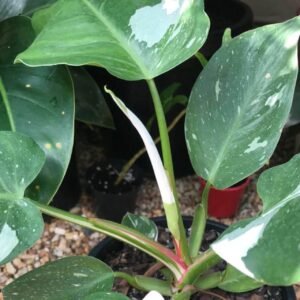
The best fertilizer to use for Philodendron White Knight is a balanced all purpose fertilizer diluted to half strength. You should ensure if contains the beneficial ingredients such as Phosphorus, Potassium, Nitrogen, Calcium, Iron, Zinc and Magnesium.
All of these elements help to promote and maintain healthy growth. You should avoid using a fertilizer that contains heavy salts as they can damage the roots and may even cause plant death. Adding things like leaf and bark matter, peat and organic manure to the soil can create an organic fertilizer.
When it comes to fertilizing houseplants, you need to be cautious of over-fertilizing. Over-fertilizing your Philodendron White Knight can burn the roots and foliage. This can then cause curling and wilting leaves, brown tips and possibly plant death.
If you think you have over-fertilized your plant, you can either change the soil or rinse the fertilizer out of the soil. You will notice the color of the water will change to clear when the fertilizer has been rinsed out.
For more information make sure to read our guide to indoor plant fertilizing.
Soil Requirements
Philodendron White Knight like to be kept in a rich, moist and well draining soil. To create a well draining soil, you can use potting soil, orchid bark, peat moss and perlite to help create better drainage and aeration.
Airflow is important in potting soil as it allows the plants roots breath. Not having enough oxygen to the roots can eventually cause them to start rotting.
Adding other organic materials like coco coir, mulch chunks and coconut husk to the soil will help restrain moisture. The plant will wrap its roots around these materials and absorb the moisture.
Philodendron White Knight like to be kept moist so it’s important to use materials that will help hold moisture without causing the soil to become soggy. Adding compost or mulch to the soil will add more richness which this plant will love.
For more information on potting soil, check out The Best Potting Soil for Houseplants.
Re-potting Philodendron White Knight
A good indicator that your White Knight Philodendron is ready for a new pot is the roots beginning to fill the entire pot. This is easily identified with roots visibly emerging from the soil when the plant is removed from the pot.
Re potting should be done during the early part of the growing season of spring. This gives your plant both the best chance to recover from any shock and promote growth.
Choose a pot that is around 2 (5cm) inches larger in width and depth. After placing the philodendron into the new pot, thoroughly water your plant until water trickles from the drainage holes.
Philodendron White Knight Diseases & Pests
The most common diseases and pests are similar to that of related Philodendron varieties such as White Princess and Pink Princess. The common pests you may encounter on your Philodendron White Knight are Scale, Fungus Gnats, Aphids and Mealybugs.
The common diseases you may encounter are Root-rot and Bacterial Leaf Spot. For more information on identifying and treating common houseplant pests see our guide to the most common house plant pests.

The best thing you can do when it comes to pests on houseplants is to try and avoid any pest infestations from starting. There are a few things you can do that will assist in preventing any pest infestations and these things are:
- Check new plants for pests.
- Isolate new plants for at least a week.
- Check your plants every few days for pests.
- Trim off dead or dying leaves.
- Wipe leaves if you notice them getting dusty.
- Keeping your plants healthy. A healthy plant will be able to handle an infestation better than those that aren’t as happy.
- Isolate any plants that have pests.
Following this will help keep pests away as well as catch any early on before any infestations are able to start. Keeping plants healthy and in the correct living environments can help to deter any pests from your plants.
Toxicity
Philodendron White Knight contains calcium oxalate crystals which are toxic to both humans and pets. If any part of the plant is ingested, symptoms may include a burning sensation and swelling of the lips, mouth, throat and tongue.
Symptoms from pets may include vomiting, lack of appetite, drooling and pawing at the mouth. You should keep this plant out of reach from children and pets.
